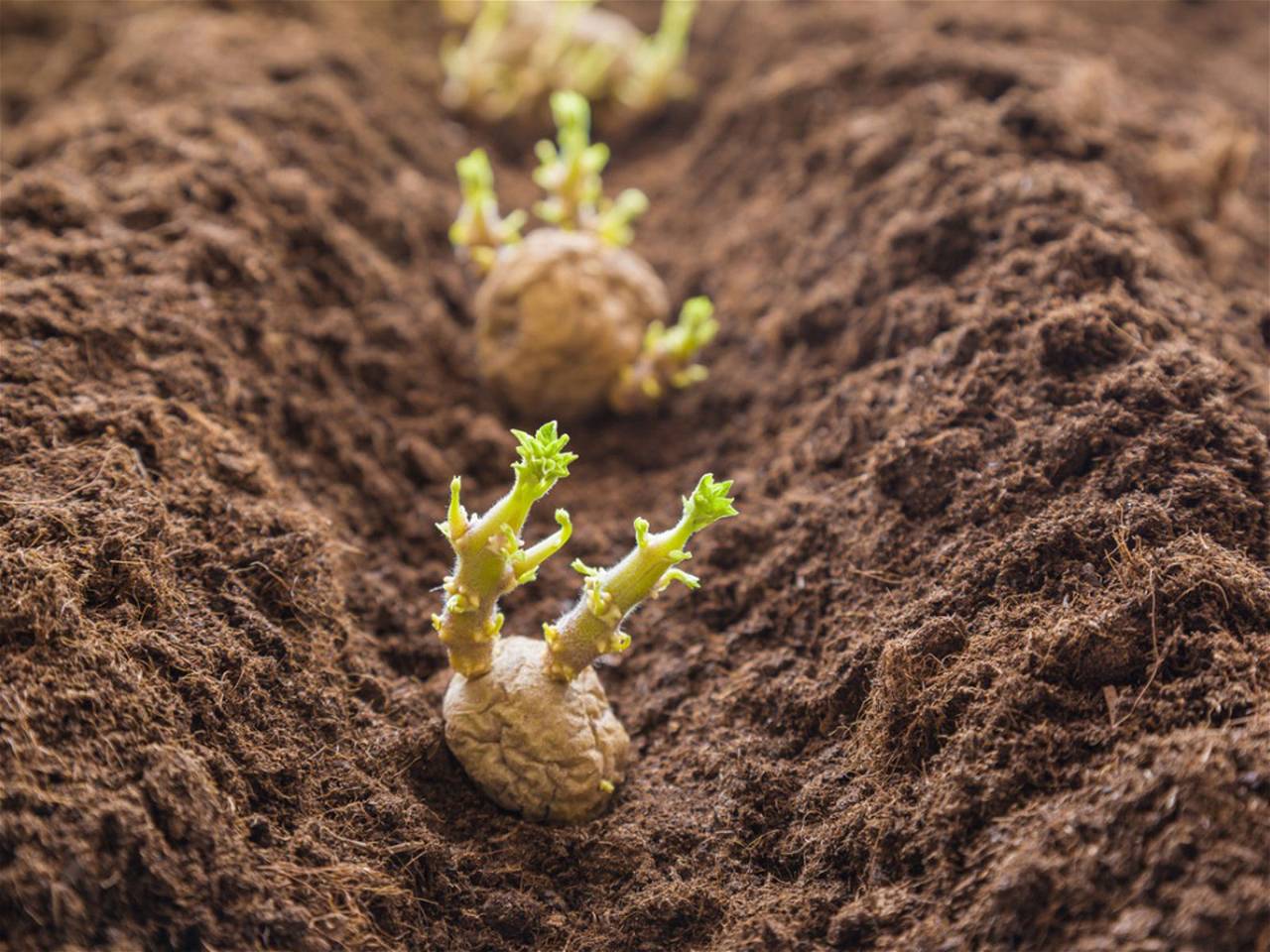
If you cultivate your own food, you will have the delight of harvesting organic veggies that will not only contribute to the beauty of your garden but will also provide an assured supply even if the whole world grinds to a standstill.
The nicest aspect about the whole thing is that you may get maximum benefits with minimal expense. You do not need to bother about finding gardeners or purchasing seeds. Your kitchen's vegetables and herbs are plenty to start a full kitchen garden. In fact, we go a step further and assist you in planting a garden with food leftovers from your table.
Potato
-
Divide the potato in half so that each half has at least one bud. Allow a few days for them to dry.
-
Take a 2-foot deep container (big plastic bags can also work) and punch holes in the bottom. Fill them with soil, cocopeat, and compost (till about 5 inches)
-
Cover the sprouting potatoes with additional 5 inches of dirt. Water them on a regular basis to keep the soil wet. Put them in a cool place.
-
Within 7-8 weeks of sowing, the potatoes should be ready for harvest.
Onion
-
Cut a small or medium onion in half from the root side. Check that portion of the bulb is still intact.
-
Fill a container with dirt, compost, and manure and put this bulb in it. Store in a cool, dry place. Water it once a day for three weeks. It should now begin to sprout shoots.
-
Remove the onion from the soil when the shoots are a couple of inches long and separate the bulbs.
-
Plant the bulbs in a bigger pot separately now (or directly in the ground). Ensure that there is enough manure or compost to keep it fed. For the next two months or so, water them every day. Within six weeks, the crop should be ready.
Chilli
-
Break a thoroughly dried red chilli to remove all of the seeds (please use gloves). Spray some water on a paper towel and spread them out evenly.
-
Roll up the paper towel after folding it in half. Use a rubber band to keep it in place. Keep this in a cool, dry location and spritz it with water every day.
-
They will be ready to plant in approximately a week. Take a container that is large enough to hold the paper towel (when unrolled). Mix in a decent amount of soil and compost.
-
Dig a hole approximately 2-3 inches deep and broad enough to fit the paper towel (bamboo towel works even better). Unroll the towel in this trench, exposing the seeds, and cover with dirt. You can also immediately sow the seeds.
-
Water every other day and maintain the container in a warm spot with 4-6 hours of sunshine.
-
The first set of leaves will develop by the tenth day. In approximately 2 months, the plant will reach a height of 8-10 inches and begin to blossom. The first chill bud should form during the next 7-10 days.
















